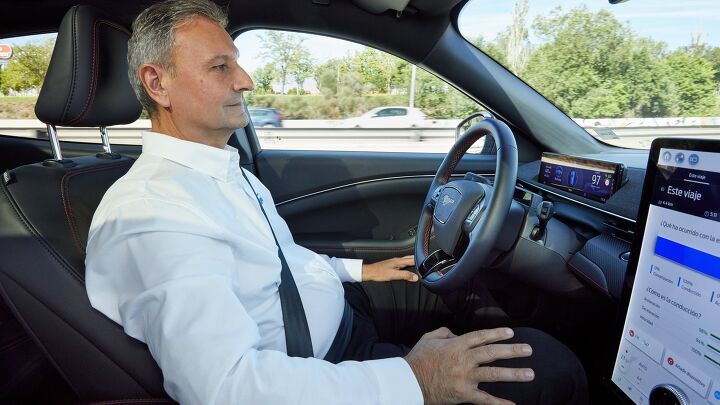
Tesla’s Autopilot and Full-Self Driving tech have been under scrutiny for a while now over their repeated failure to stop collisions and monitor driver behavior. Now, it’s Ford’s turn under the spotlight with its BlueCruise system. The NTSB said it wants to find out if the system was in use when a Mustang Mach-E was involved in a deadly crash in San Antonio, Texas.
The Mach-E ran into a Honda CR-V stopped in a travel lane on Interstate 10, killing its driver, a 56-year-old man. Ford said it reported the incident to the National Highway Traffic Safety Administration as soon as it became aware of the crash and noted that it will cooperate fully with any investigation.
BlueCruise is advertised as a hands-free system, but it’s only Level 2 autonomy meaning the car can’t drive itself without an attentive human behind the wheel ready to take complete control at any time. The system works on limited-access highways, like Interstate 10, across North America, and owners pay a subscription fee for access to the feature.
This story comes shortly after the Insurance Institute for Highway Safety’s new research hit the streets, which found that many driver assistance functions, including BlueCruise, fail to adequately monitor driver behavior and give enough feedback when something goes wrong. A spokesperson for the IIHS said that while many drivers feel the features make their long drives easier, there’s very little evidence that they make the trip safer.
The IIHS rated BlueCruise Poor in the new tests, where it is joined by the Tesla Model 3, Mercedes-Benz C-Class, Genesis G90, and Volvo S90. Only the Lexus LS earned an Acceptable score in the updated tests.
[Image: Ford]
Become a TTAC insider. Get the latest news, features, TTAC takes, and everything else that gets to the truth about cars first by subscribing to our newsletter.

